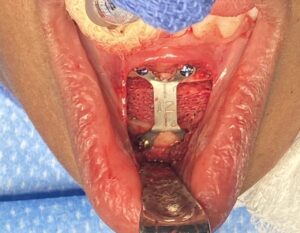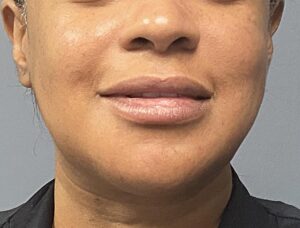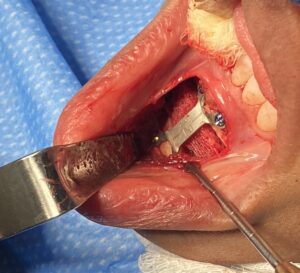Background: The vertical length of the female face extends from the frontal hairline (trichion ) down to the bottom of the chin. (pogonion) It is aesthetically divided in thirds which are ideally proportionate. From a surgical manipulation standpoint the facial thirds can be thought of as the forehead, nose-upper lip and chin as all of these structures can be changed. (lengthened or shortened)
Of all the facial thirds the\ one that is the most changeable is the chin in both lengthening and shortening directions. The chin is capable of being elongated more than it can be shortened up to lengths of 10 to 20mms. While implants can be used for chin lengthening they are limited to less than 10mms due to the restrictions of the stretch of the soft tissue chin pad. In significant amounts of chin lengthening the safest approach is a vertical lengthening osteotomy with plate fixation.
How much to lengthen the chin, which could be determined by measuring facial thirds on a picture, is more conveniently determined by the jaw thrust maneuver. By asking the patient to put their chin in their desired position the gap between the upper and lower front teeth is measured. That millimeter number combined with the amount of normal overbite (1 to 2mms) becomes the amount of vertical chin lengthening needed to approximate the created chin lengthening effect.




Case Highlights:
1) The vertically short lower third of the face is usually best treated by a bony lengthening genioplasty.
2) How much to vertically lengthen the chin is preoperatively determined by intraoral interincisal measurements of the patient in their desired chin lengthening appearance.
3) The gap created by the downfractured chin segment is filled with a cadaveric corticocancellous bone block graft.
Dr. Barry Eppley
World-Renowned Plastic Surgeon







